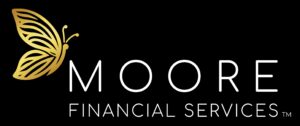
Keep in mind, however, that if these colleagues think that the objective of the Murder Board is only to help you look good, they probably will not want to give up their valuable time. You must give them an incentive tied to their self-interest. They will have their own priorities. You should frame your request in such a way that these colleagues see a potential dividend accruing to them by investing their time. Remember from your own experience that “What’s in it for me?” is the prime motivator for people to take action. You must find a way to have these colleagues believe they will gain some benefit by being in your simulated audience. Reciprocity is the key. My advice is to recruit only people who themselves will speak in public.. Then you say, “If you will be on my Murder Board now, I will be on yours when you must make a presentation.” Presto. They see a potential benefit in the future by spending some time with you now.
The following information shows how to close a speech that may have people having your message firmly planted in their minds. 1. You can close a public speaking subject by summarizing the main speech points. 2. Humorous ending by cracking a joke or funny remark. If you leave them laughing and applauding, and also you will leave an extremely positive impression about you on the audience. It has been noted that any public speaking matter can be closed in a humorous way. 3. If the subject is not appropriate to end with humor, you could end with a touching story or quotation that leaves the audience thoughtful and quiet. 4. Call for action. You may call the audience to act the way you say. For example you may ask them to stand up and take a pledge with you. 5. Visualize the outcome of your call to action with a prop or visual aid. 6. Ask a rhetorical question that captures the message and leaves the audience thinking. 7. Close with an illustrative example. 8. Use some surprising facts or figures related to your public speaking subject that may leave the audience surprised. 9. Recite a couple of lines from songs, poems or speech quotes from a historical presentation. 10. Offer a so-called moral of the story. 11. Refer back to the anecdote, quotation or saying that you used in the opening of the speech. 12. Close with an illustrative example. Always remember that the audience must have the feeling that you are really finished. So look at them after your last words and nod. Practice your last words. Write them out. Ask someone to judge your closing statement, just like you would do it for the opening of the speech. Closing of the speech is the final impression that you will leave your audience with.
Most of us think that only teachers, politicians, actors and advocates are the people who need to speak in public. This is, however, a mistaken view. All of us need to do public speaking at least once in our life. It can be an elocution competition at school, a presentation in college, a group discussion at the University level, a board meeting in office, a press conference, a corporate get together or a simple family gathering, sometimes or the other we have to face the audience. But to be very honest, almost 70 percent of the population suffers from glossophobia, that is, stage phobia, or the fear of speaking in public. This is where; we need the help of public speaking workshops. There are many training institutes that provide public speaking classes to help the general public in developing their speaking skills. These classes offer a friendly and supportive atmosphere for people belonging to different backgrounds to train them in effective public speaking.
You can use a quick comical definition to liven up a public speaking engagement. As always, make sure the word defined is relevant to the point you are trying to make. Banker: A fellow who lends you his umbrella when the sun is shining and wants it back the minute it begins to rain. Mark Twain (similar quotation by Robert Frost). City Life: Millions of people being lonely together. A man who just sits and thinks, mostly sits. A man who is too cowardly to fight and too fat to run. A man with two perfectly good legs who has never learned to walk. Death: To stop sinning suddenly. Jury: Twelve persons chosen to decide who has the better lawyer. Radical: A man with both feet planted firmly in the air. Song: The licensed medium for bawling in public things too silly or sacred to be uttered in ordinary speech. Zoo: A place devised for animals to study the habits of human beings. There are literally thousands of these definitions available in comedy books, quotation books, and books for speakers. In many cases you will have several to choose from on any given topic. I probably had at least 20 choices on the subject of conservatism alone.
Public speaking is a fabulous tool to market your business. When you do it right your audience can’t wait to interact with you and learn more. But when you do it all wrong you’ll have them running for the door. One of the most critical parts of delivering what I call your “Signature Speech,” a presentation you deliver for free to groups of your ideal clients, is the conclusion. It’s during the conclusion where you will start to see the return on your investment of delivering a free speech. 1. Do a wrap-up or review of your main points. As you come to the end of presenting the main body of your speech, the first part of the conclusion is to remind your audience all you talked about. Sum up your speech in a few lines reviewing the information you shared in the same order you originally presented it during the body of your speech.
